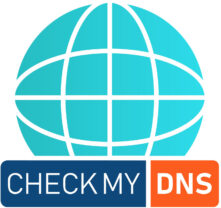Troubleshoot DNS issues have proven to be a big villain in dealing with the problem of lack of accessibility and functionality for websites. DNS is supposed to transform domain names to user-friendly IP addresses thus directing the users to exact web servers. Whenever this encounters a problem, it locks up the websites for some time or takes its time in loading because DNS fails to load.
This has fortunately been easy to debug with a little approach and tools used. It shall walk you through step-by-step solutions to diagnosing and troubleshooting common DNS issues so your website remains accessible and up and running.
Step 1: Common DNS Issues
But before diving into the steps of troubleshoot DNS issues, let us first take a look at some common DNS issues that we must know about them:
- DNS Propagation Delays: Whenever changes to DNS are implemented, there is a certain amount of time it takes for these changes to propagate to all the DNS servers around the globe which may lead to inconsistent access.
- Misconfigured DNS: When the IP addresses or DNS record types are wrong in a website’s DNS configuration settings, then the viewers or surfers may not locate their favorite website.
- Problem with DNS Cache: Due to DNS cache being either too outdated or corrupted at times users may not access the most updated version of the particular website.
- DNS Server downtime: In case a viewer tries to reach any webpage the DNS provider server and in case they face issues in reaching that will end with them unable to hit the webpage.
- Stale DNS Records: Failure to renew domain registration or DNS records can lead to problems with accessing the site
DNS setup is perhaps the most common cause of DNS problems. To check your DNS setup, you should refer to your DNS hosting service to see if all the necessary records, like A, CNAME, MX, and TXT records, are correctly set up. Here is a very brief primer on these types of records:
- A Record: Associates your domain name with the IP address of your server.
- CNAME Record: Associates one domain name with another. This is a common use for subdomains.
- MX Record: Routes mail to your mail server.
- TXT Record: Stores text information, often for verification.
How to check: Look at your DNS provider’s dashboard and review your DNS settings. Each record should point to the correct server.
Step 2: Use DNS Lookup Tools
Now, after your DNS settings are verified, you can check if they resolve properly using online DNS lookup tools like DNS Checker, MX Toolbox, or Google Dig. These help you identify if the DNS records propagate well across regions and different servers.
Using DNS Lookup Tools
- Go to a website with DNS lookup
- Enter the name of your domain.
- Choose the type of record that you would like to verify.
- Review the results to ensure that the records match your settings.
If the records are inconsistent in all regions, it might be due to DNS propagation still in progress or there could be a misconfiguration that needs to be resolved.
Step 3: Clear DNS Cache
DNS caching is very fast for websites to load, but in case that the information which was saved in DNS has been modified or even corrupted, then website access would become a big problem. Therefore, one needs to delete the DNS cache and ask your device to fetch the most updated information from the DNS.
Windows: Open the command prompt window and write ipconfig /flushdns
MacOS: Open Terminal and then type the command sudo killall -HUP mDNSResponder.
Chrome Browser: Go to chrome://net-internals/#dns. Click “Clear host cache.
Usually, clearing the DNS cache will resolve access issues if changes were made to the DNS recently.
Step 4: Check for DNS Propagation
If you changed your DNS configuration recently, your changes might take up to 48 hours to fully propagate to global DNS servers. In this time period, some users will experience continued access issues.
How to check DNS propagation:
- You may use a DNS propagation tool like our checkmydns.org to verify if the DNS records have propagated in all regions.
- Monitor the propagation and refrain from making more changes until the records propagate thoroughly since this can reset the propagation period.
Step 5: Test DNS Resolution on Your Network
Sometimes, the problem lies in the network itself. To check how DNS is resolving on your network, you can use tools like nslookup (for Windows) or dig (for Mac and Linux).
How to use nslookup and dig:
nslookup: Open Command Prompt, type nslookup yourdomain.com, and press Enter. It will return the DNS information as resolved by your local network.
dig: Open Terminal, type dig yourdomain.com and hit Enter. This will output very detailed information about the DNS query.
If your domain still fails with nslookup or dig, it could be a network specific problem, for example, related to your ISP’s DNS server.
Use DNSSEC: Enable DNSSEC or Domain Name System Security Extensions to further harden the DNS transactions. This also prevents cache poisoning.
Regularly Review DNS Records: Scan and update your DNS records regularly to prevent old configurations. This would ensure continuity and prevent issues.
Use Multiple DNS Providers: Using multiple DNS providers will improve uptime and reliability. This prevents downtime issues because of provider-specific issues on your site.
DNS problems can cause a user experience and business interruption with your website experiencing downtime. You can use the following DNS steps to troubleshoot DNS issues quickly identify some of the most common DNS problems. This means your website will remain accessible and secured. Minimizing such DNS-related disruptions can help make sure your website has a smooth experience for users.
